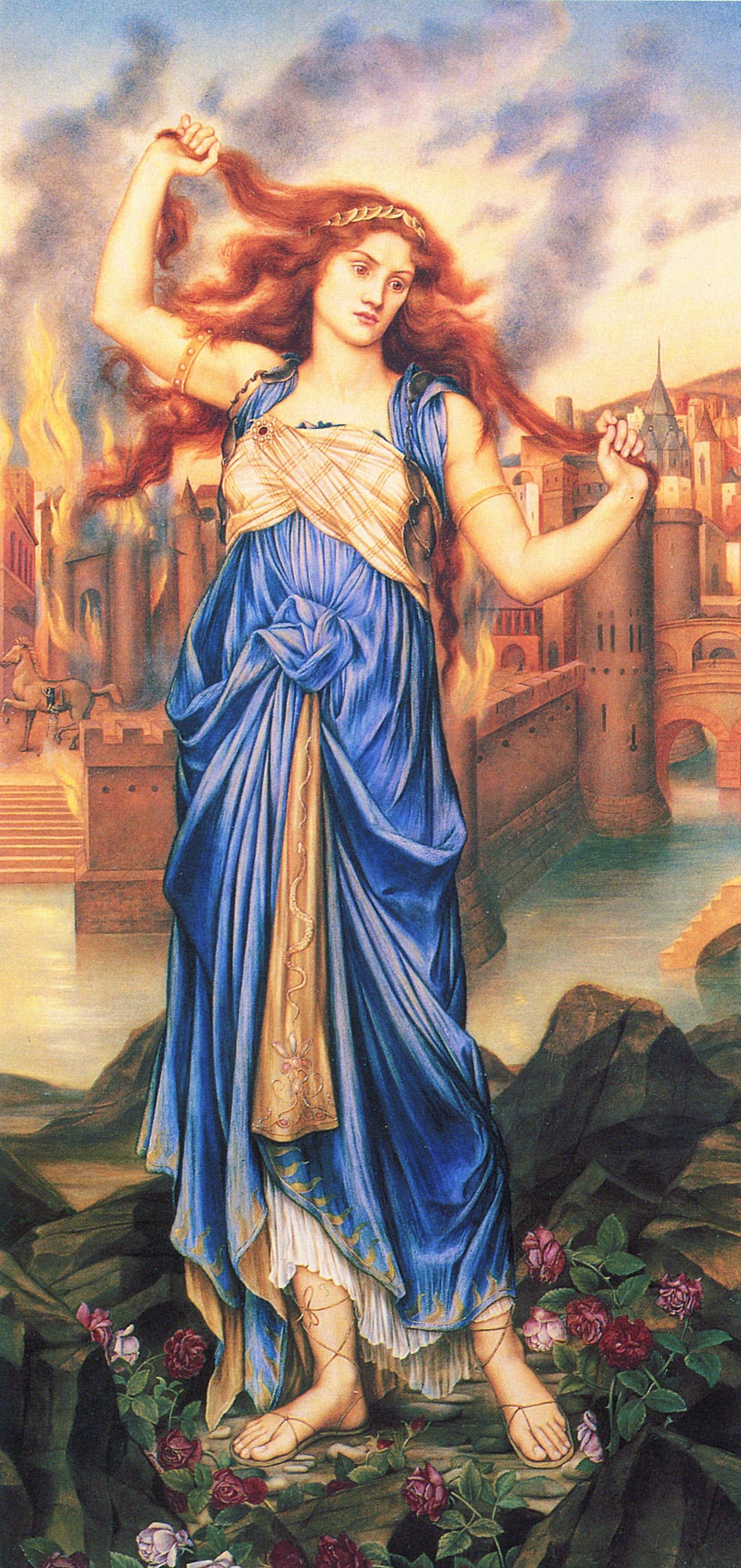Cassandra, Evelyn de Morgan, 1898
The category is: Earthquake Survivor Realness
To grow up on the West Coast is to live in the shadow of The Big One. It’s like a deity in the antiquarian sense - intemperate, unpredictable, and ready to levy cataclysm in spite of your best attempts to appease it. In grade school, we were subject to a strange blend of bureaucracy and fatalism around earthquakes that, in retrospect, was good psychological preparation for 9/11.
Every month, drills were held in our flimsy classrooms. Alarms rang at a preordained hour, and I would very earnestly duck under my little desk and cover my neck. Then the teacher, who invariably phoned in their performance of “Sole Authority Figure in Conditions of Mortal Peril,” decided when the earthquake was over and led us sedately out to the assembly zone to be counted.
Even as a child, I knew that these attempts are preparation were farcical at best. I knew this because, concurrent to the earthquake drills, we learned about plate tectonics, the San Andreas Fault, Loma Prieta. Against a force of nature, what chance does a duck and cover have?
It’s giving iconic cursed prophetess
In Slow Violence and the Environmentalism of the Poor, author Rob Nixon writes about the gradual, invisible-from-without devastation wrought by climate collapse. As a treatise against ignoring the slowly accumulating signs of impending disaster, the book speaks to our tendency to become distracted by the more sensationalized and splashy (and Eurocentric) news of the day. This is to say nothing of the exponentially greater impact such disasters have on the under-served and under-resourced. It’s giving Cassandra, hunny! The stark contrast here is that, by all accounts, the event in question won’t unfold slowly and will be un-ignorable.
Perhaps because the human psyche can’t weather constant existential threat, we have a kind of collective, self-reinforcing willful amnesia about The Big One. When we are periodically reminded of our impending doom, as we notably were in 2015 by Kathryn Schulz in her New York Times article cheerily titled, “The Earthquake That Will Devastate the Pacific Northwest," we (or at least *I* certainly) experience some kind of panic-denial arc. Dear subscriber, I didn’t even read the article! What will jog me from my negligent bliss?
To paraphrase acclaimed ecoterrorist RuPaul, “If you can’t overcome the myopic intersection of individualism and capitalism, how in the hell you gonna support your community in times of crisis? Can I get an amen up in here?!”
In response to hypothetical questions about a zombie apocalypse, I have always affirmed that I would immediately off myself rather than face the onslaught. I am a delicate and pragmatic flower. This is the approach I am tempted to take regarding The Big One (other options include taking up my father’s mantle and hoarding supplies and weapons, street corner evangelism, and, my personal favorite, sexualizing it [tHe BiG oNe]).
But if Nixon’s book has instilled some common sense in me, it’s about defying the myopia of rugged survivalist individualism in favor of establishing and maintaining community care. We can and should stockpile a reasonable amount of nonperishable goods, water, what have you — but we can and should also know who are people are in the event of an emergency. We can and should check in on vulnerable neighbors, both housed and unhoused, and allocate some portion of our resources for their care. We (probably) can and (definitely) should meditate on the transitory nature of life itself. After all, what kind of post-apocalyptic world do you want to live in, assuming you survive?




